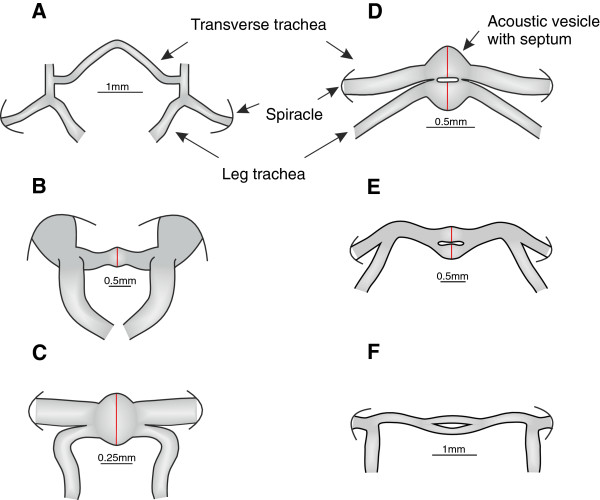Figure 1.
Illustration of acoustic tracheal diversity. Six general types of acoustic tracheal systems to illustrate their main morphological differences. (A) A member of the subfamily Gryllacridinae (Gryllacrididae) considered as primarily non-hearing, (B)Gryllus bimaculatus (Gryllidae: Gryllinae), (C)Oecanthus sp. (Gryllidae: Oecanthinae), (D)Paroecanthus podagrosus (Gryllidae: Eneopterinae), (E)Luzara sp. (Gryllidae: Phalangopsinae), (F) Phalangopsinae 1 (Gryllidae: Phalangopsinae). One of the most conspicuous features concerns modifications of the transverse acoustic trachea providing the anatomical basis for the contralateral input to the ear. The most basic form appears to be an unspecialized connecting trachea as present in the Gryllacrididae species (A) without a septum. Within the Gryllidae the simplest structural modification in the midline of the transverse trachea is a single, small sized vesicle as in G. bimaculatus(B). For the majority of rainforest species the acoustic vesicle is enlarged both in absolute and relative size compared with G. bimaculatus, or structurally modified into a double acoustic vesicle (P. podagrosus(D) and Luzara sp. (E)). Tracheal system of a member of the Gryllidae subfamily Phalangopsinae characterised with secondarily loss of tibial tympana (F).

